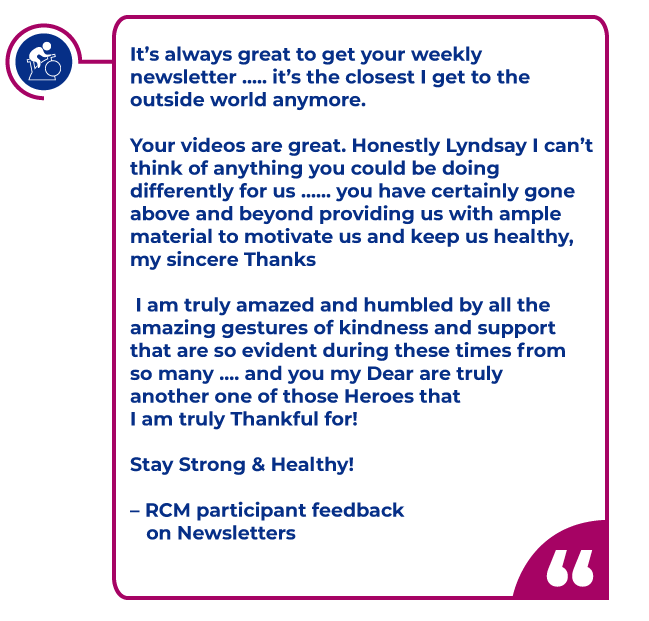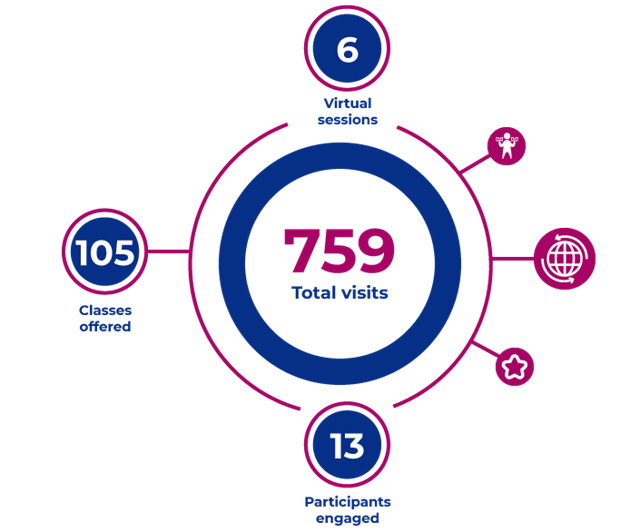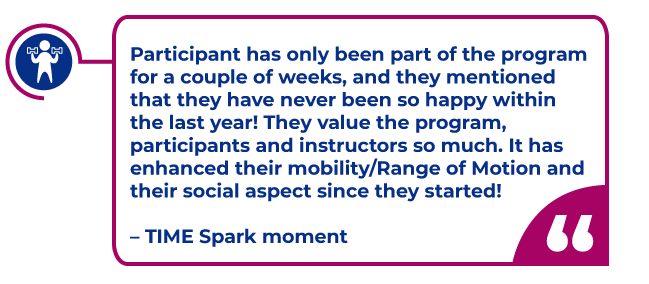Post-Rehabilitation programs offer a strong foundation in supporting people to successfully transition into community life.
Post Rehab
Respiratory and Cardiac Maintenance (RCM)
Respiratory and Cardiac Maintenance (RCM) is a post-rehabilitation program for those who have a chronic lung or cardiac condition. This program allows participants to continue their exercise routine after completion of a rehabilitation program.
COVID-19 Challenges and Program Impact
During the COVID-19 pandemic, RCM transitioned into a virtual environment. The RCM program was originally developed in partnership with Lung Health Foundation, and during the pandemic Abilities Centre (AC) worked with Lung Health Foundation to build out two pre-recorded, instructor filmed videos per week. These videos were shared by Lung Health Foundation with all their RCM partners across the province. AC participants also received weekly newsletters including mental health resources, social program opportunities and webinars. Although our participants in RCM are one of the most vulnerable health populations for COVID-19, we were able to provide them with resources to remain engaged and active in their rehabilitation exercises allowing us to support their health journey during these uncertain times.


Together In Movement & Exercise (TIMETM)
Together In Movement & Exercise (TIMETM) is a community-based exercise program for people with a range of neuromuscular conditions such as stroke, multiple sclerosis, or acquired brain injury.
Three Programs run:
- TIMETM
- TIMELiteTM
- TIMETM at Home*
*Developed by UHN started Jan 26th, with two sessions being delivered per week for four weeks
COVID-19 Challenges and Program Impact
*January 2021 - Developed by University Health Network, with two sessions being delivered per week for four weeks.
At various times throughout the COVID-19 pandemic, when TIMETM and TIMELiteTM participants were unable to attend in-person training, they were supported with newsletters including appropriate exercise videos, mental health resources, social program opportunities and webinars.
In March 2020 through the amended Reopening Ontario Act – Physical Therapy Prescription, TIMETM participation increased 27% from TIMETM at Home (virtual) to TIMETM in person
AC programing, including TIMETM, focuses on capturing Spark Moments which are the hidden flames in individuals that excite them and tap into their true passions, what motivates and inspires their authentic passions, talents, assets, skills and dreams. Spark moments can be musical, athletic, intellectual, academic or relational.
Sparks: How Youth Thrive. (video). YouTube
*Benson, P. 2011, April 22, TEDxTC – Peter Benson –


In-class assessments were implemented just prior to the beginning of COVID-19 pandemic and continued at various intervals when in-person programming was available. In-class assessments consists of two measures; sit-to-stand and timed up and go. 80% of participants who completed the TIMETM At Home maintained their scores within the Minimal Clinically Important Difference (MCID). MCID is the smallest change in a outcome, such as sit-to-stand, that a participant would identify as important and indicate a change in the patient’s management. Overall, 58% of participants, including those who did not continue with TIME At Home, maintained their scores within the MCID from lockdown to in-person TIMETM, this indicates effective long term impact on health of TIMETM participants.

Curatio Project
Abilities Centre partnered with Curatio and University of British Columbia (UBC) to design a 12-week education program for the Stronger Together app. The project was aimed at providing support to patients directly in their communities. Abilities Centre built a 12-week program for populations living with cardiac and respiratory challenges. The program consisted of weekly themes:
1) Benefits of Exercise
2) Lifestyle Changes
3) Smoking/Tobacco Cessation
4) Keeping Active at Home
5) Making Sense of Doctors’ Reports
6) Air Quality (resp) / Avoiding Alcohol (cardiac)
7) Maintaining Motivation
8) Posture & Balance
9) Wellness Wheel
10) Nutrition Part 1: Macros, Micros & Vitamins
11) Nutrition Part 2: Reading Nutrition Labels
12) Healthy Eating Habits